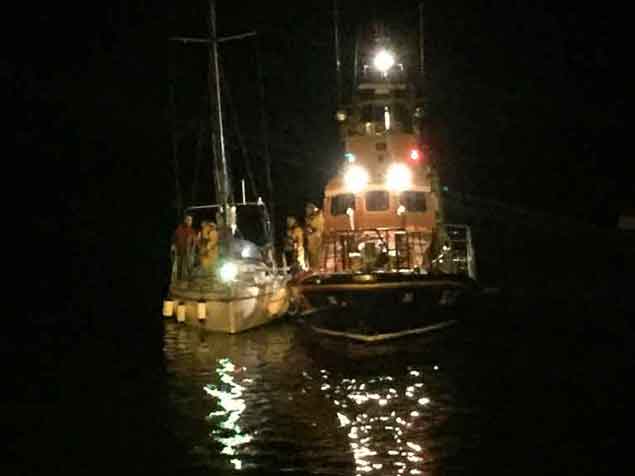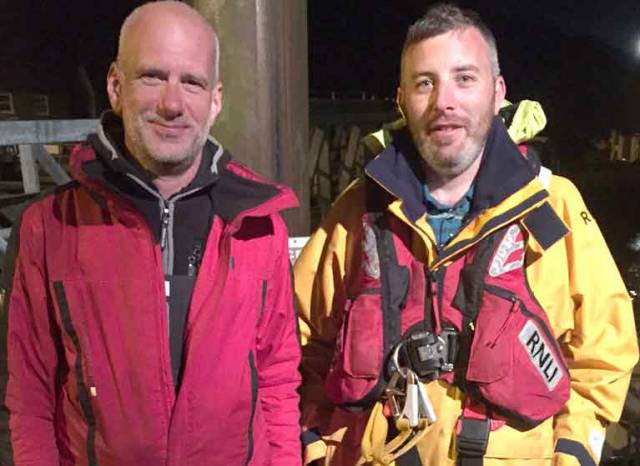The Courtmacsherry RNLI All Weather Lifeboat was called out at 5.20 pm yesterday to go to the aid of a solo sailor in a 31–ft yacht that had got into difficulties 40 miles off the Seven Heads in West Cork. The yacht was on its voyage from The Azores when it developed mechanical difficulties and sought help.
Arriving at the scene at 7.30pm, the Lifeboat, under Coxswain Kevin Young, took the vessel in tow and commenced its long and slow journey back to Courtmacsherry Harbour.
"He was knocked down in the Atlantic Ocean on the way from the Carribean a few months ago"
 Courtmacsherry Lifeboat and the yacht as they approach Courtmacsherry Pontoon early this morning
Courtmacsherry Lifeboat and the yacht as they approach Courtmacsherry Pontoon early this morning
The Lifeboat arrived safely back into Courtmacsherry Harbour at 2.15 am and berthed at the Pier pontoon. The lone skipper of the offshore yacht "Quadrille" was glad to be in the safe surrounds of Courtmacsherry tonight after spending 10 days at sea on his voyage from the Azores off North Africa to Milfordhaven in Wales. The Skipper Rees Hopkins from Cardiff has been on a singlehanded round the world sailing trip for the past 11 months and he lost power with mechanical failure three days ago. By accident tonight he has landed in his 17th Country and mighty happy to do so. He was knocked down in the Atlantic Ocean on the way from the Carribean a few months ago and is looking forward to a few quieter and restful days in Courtmacsherry.
The crew of the Lifeboat on this callout were Coxswain Kevin Young, Mechanic Pat Lawton and crew members Dara Gannon, Ciaran Hurley, Austin McKenna and Evin O Sullivan.































































